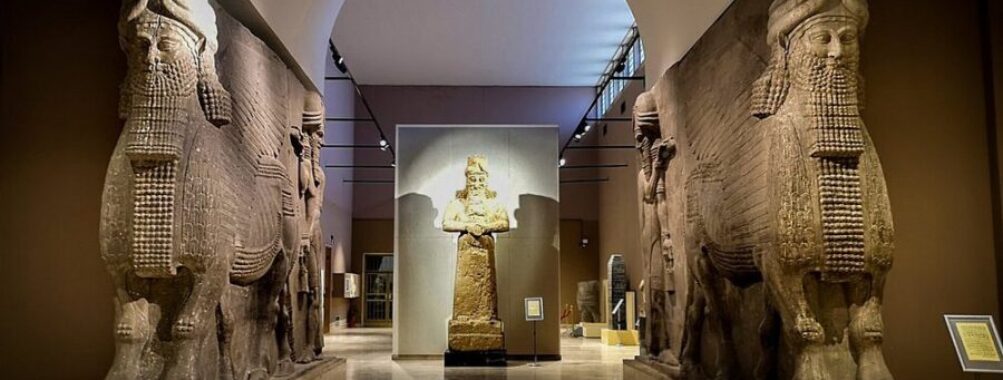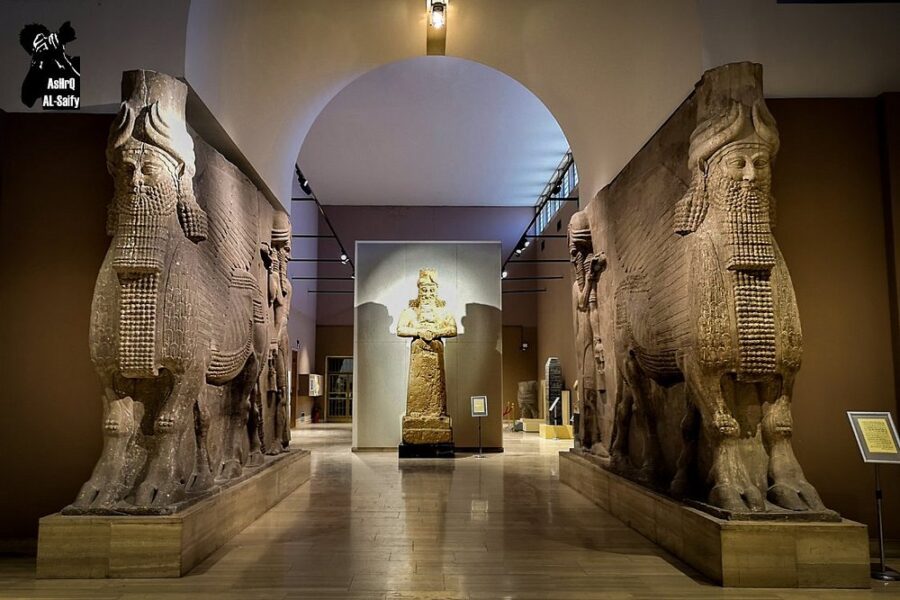
Iraqi National Museum
Table of Contents
History and Significance

The Iraq Museum, or Baghdad Museum, as some call it, wasn’t always the beacon of hope for the heritage of Iraq that it is today. Its story is intertwined with both meticulous excavation and heartbreaking loss, particularly during the looting of the Iraq Museum in Baghdad. Founded in 1922, its purpose was simple: to safeguard the antiquities uncovered from archaeological sites in Iraq. Early collaboration with archaeologists from the University of Chicago helped fuel its growth, bringing to light countless Sumerian, Babylonian, and Assyrian treasures. But the 2003 Iraq War brought unprecedented challenges. The 2003 invasion of Iraq saw widespread chaos, and the museum fell victim to looting, with items looted from the museum numbering in the thousands. This event was a devastating blow to Iraq’s cultural heritage, and the museum’s collection was left in disarray, a stark reminder of the fragility of history in the face of conflict. It took tremendous effort from museum staff, international organizations, and dedicated Iraqi archaeologists to recover and restore what was lost, and the reopening of the Iraqi National Museum was a testament to their perseverance.
Main Attractions and Activities
Visiting the Iraqi National Museum today is like stepping back in time, even if a few things are still unaccounted for, sadly. You can wander through galleries filled with cylinder seals, intricate cuneiform tablets, and monumental sculptures. The museum’s displays showcase the progression of civilizations that once thrived in Mesopotamia. Walking through the Iraqi museum, you’re not just looking at artifacts; you’re witnessing the ingenuity of the people who laid the foundation for much of what we know today. And besides the main exhibits, the museum often hosts special exhibitions, lectures, and workshops aimed at educating the public about Iraq’s cultural heritage. It is one of the best museums in Baghdad. These programs really help bring history to life, which is why it’s such an important site in Iraq.
Visitor Experience
Visiting the Iraqi National Museum is more than just a casual tourist activity; it is an immersion into the history of Iraq. As you wander through the halls of this national museum in Baghdad, you are treading on hallowed ground, surrounded by remnants of empires. The museum’s architecture itself, though bearing the scars of past conflicts, stands as a testament to resilience. The atmosphere is thick with the weight of history, a somber reminder of both the grandeur of the past and the fragility of cultural heritage. The way the museum presents each artifact – from the smallest cylinder seal to the largest Assyrian sculpture – tells a part of the complex history of Iraq. But sometimes the best part is that the museum provides an opportunity to reflect on the importance of preserving our shared past, and there is nothing more interesting than the history of Mesopotamia. You may find that it’s not just a sightseeing trip, it’s a profound and moving experience.
Tips for Visitors
Planning your visit to the Iraqi National Museum requires a bit of foresight, and you should keep some things in mind. To ensure a smooth and enriching experience, it is useful to remember the following:
- Check the museum’s official website for the most up-to-date information on opening hours, ticket prices, and any special exhibitions that might be on display.
- Consider hiring a guide, especially if you are not an archaeologist, to get a more in-depth understanding of the artifacts and their historical context.
- Remember that photography may be restricted in certain areas of the museum, so it’s always a good idea to ask beforehand.
- Give yourself plenty of time to explore the galleries at a comfortable pace.
- Remember that modesty in dress is always appreciated.
Enjoying your visit to the national museum will give you an unforgettable experience.
Accessibility and Facilities
The Iraqi National Museum has made efforts to improve its accessibility for visitors with disabilities, but there are still challenges, and the staff is very helpful. The museum strives to provide wheelchair access to most of its galleries, but it’s always a good idea to confirm accessibility in advance, especially if you have specific requirements. The facilities include restrooms, and there is often a small gift shop where you can purchase souvenirs and books related to the history of Iraq. But you must understand that, due to past conflicts and looting of the Iraq Museum, some areas may be under renovation or temporarily closed. However, the museum staff is committed to ensuring that all visitors have a comfortable and enriching experience. The museum is a real treasure for the country, and Iraq should take care of it. And one more thing, if you plan to visit any archaeological sites in Iraq, maybe you should consult the Iraqi National Museum’s staff.
Unique Features
The Iraqi National Museum distinguishes itself through several unique features, offering a comprehensive narrative of Mesopotamia’s evolution. Several elements contribute to its distinct character:
- The presence of cylinder seals, intricately carved and providing insight into ancient practices.
- The museum’s unique presentation of Babylonian artifacts.
The museum’s commitment to preserving Iraq’s cultural heritage is evident in its ongoing excavation efforts and collaborative projects. Its holistic approach and dedication to education make it a vital resource and a must-see.
Overall Impressions
My overall impression of the Iraqi National Museum is one of profound respect and admiration. Despite facing enormous challenges, including the looting of the Iraq Museum in April 2003 during the invasion of Iraq, the museum has emerged as a beacon of cultural resilience. The effort to recover items looted from the museum and restore its galleries is nothing short of heroic. The artifacts themselves, from the ancient cylinder seals to the monumental sculptures, tell a captivating story of Iraq’s rich history. Each visit provides new insights into the Sumerian, Babylonian, and Assyrian empires that once thrived in Mesopotamia. The museum’s displays are well-curated, offering visitors a clear and engaging understanding of the history of Iraq. I found it a profoundly moving experience. This museum in Baghdad is a testament to the importance of preserving cultural heritage, and I highly recommend it to anyone interested in the ancient world.
Pros and Cons
The Iraqi National Museum, like any institution, presents both advantages and disadvantages worth considering. It boasts several notable strengths:
- Its extensive collection of antiquities offers an unparalleled glimpse into the history of Iraq.
- The museum staff is dedicated and knowledgeable, enhancing the visitor experience.
- The reopening after the looting is a triumph of cultural preservation.
However, there are also some drawbacks. Some areas may still be under renovation or closed, accessibility may be a challenge, and many looted items remain unaccounted for. Despite these limitations, the Iraqi National Museum remains a vital institution and a must-see destination for anyone interested in the heritage of Iraq.
Location
Places to Stay Near Iraqi National Museum
Find and Book a Tour
Explore More Travel Guides
No reviews found! Be the first to review!